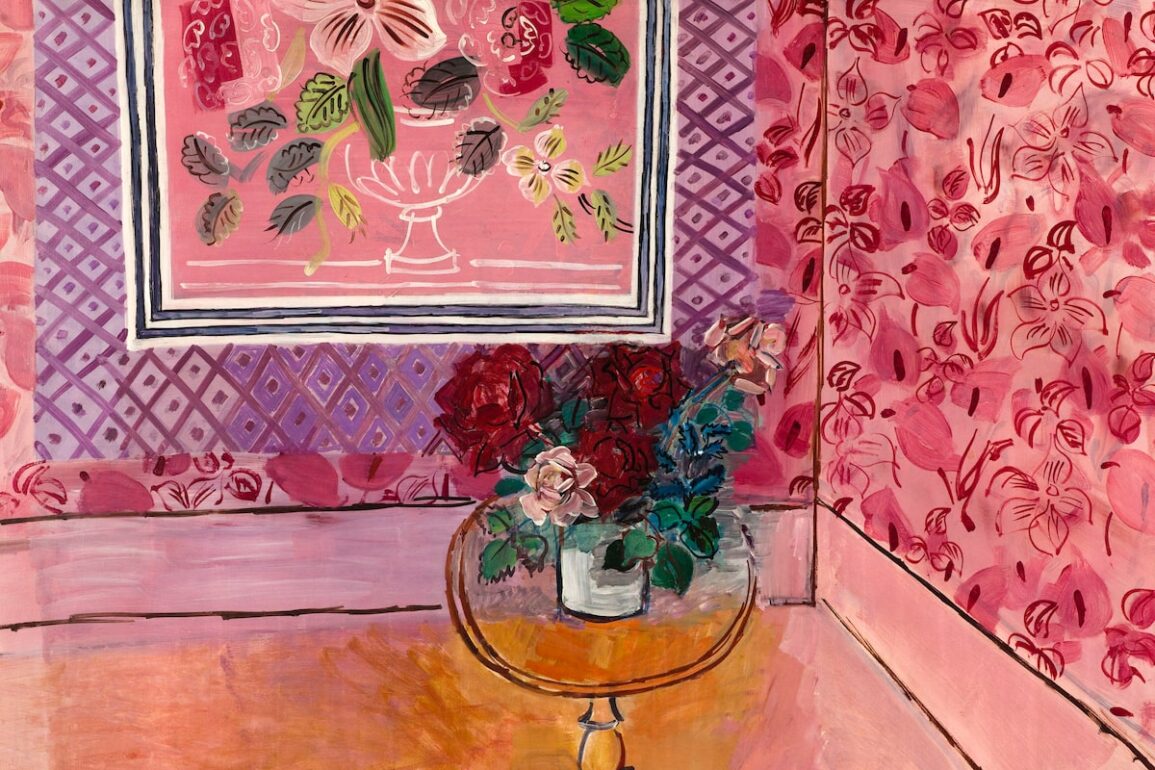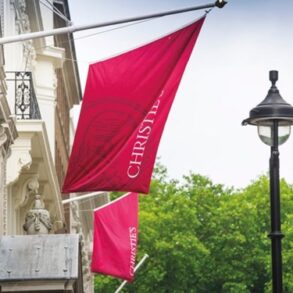
The Fauve artist Raoul Dufy painted 30 Ans ou La Vie en Rose (30 years or In the Pink) to celebrate the 30th anniversary of the Galerie B. Weill.Musée d’art moderne de Paris/Supplied
In theory, it’s important to support emerging artists. In practice, those who specialize in such support – a small press, an indie theatre, an early-career commercial art dealer – often find themselves abandoned by the most beautiful butterflies when they burst from the chrysalis. No hard feelings, but an artist will naturally seek the most prominent venue possible.
The early 20th-century Parisian art dealer Berthe Weill seems to have suffered from this reality. To judge from an exhibition at the Montreal Museum of Fine Arts devoted to artists she sometimes represented or works that may have passed through her hands, Weill had a keen eye, a soft heart and not much of a head for business.
Portrait of Berthe Weill by the dealer’s friend, painter Émilie Charmy, 1910-1914.Montreal Museum of Fine Arts/Supplied
She was the first dealer to sell a Picasso, when he was a mere 19 and a figurative painter, and she gave him one of his first shows, in 1902, but never represented his mature work. Matisse, whom she showed repeatedly over the years, said you couldn’t make a living off what you sold through the Galerie B. Weill, a small cluttered shop in Montmartre that also offered antiques and books. Those artists who could do so needed to move on.
And yet Weill lent her early support – aesthetic and financial – to some of the greatest names of 20th-century art, while also showing lesser-known figures of the same milieu. Reconstructing her career for the exhibition was a massive task for independent scholar Marianne Le Morvan, MMFA curator Anne Grace and colleagues at New York University’s Grey Art Museum and the Musée de l’Orangerie in Paris.
First of all, Weill did not keep proper business records of what she bought, exhibited and sold. To determine what paintings passed through her gallery, the scholars relied partly on her 1933 memoir Pan! dans l’oeil! (Pow! Right in the Eye!), partly on the existing research about the more famous artists she showed and partly on documents such as flyers and invitations.
For example, in 1917 she organized a show for Amedeo Modigliani that included, among many other works, four nudes with visible body hair. When crowds gathered outside the gallery’s windows to gawk, the local police chief intervened and Weill was forced to take the paintings down. Today, there are eight Modigliani nudes in existence that might fit this description: The MMFA has secured the loan of Nude with Coral Necklace from the Allen Memorial Art Museum in Oberlin, Ohio. It may – or may not – have been shown by Weill, but you get the idea.
Nu au collier de corail (Nude with a Coral Necklace) of 1917 is an example of the nudes by Amedeo Modigliani that shocked Parisians with their inclusion of body hair.Allen Memorial Art Museum, Oberlin, Ohio/Supplied
The room devoted to the Fauves, the strongest in this exhibition, includes Raoul Dufy’s familiar scene of a street in Le Havre decked out with French flags for Bastille Day, now in the Centre Pompidou in Paris. It’s a work with which Weill had a clear link: It was painted during a period when she was actually visiting Dufy’s companion not far away in the town of Falaise, waiting for the artist to make enough sales to join them and, according to her memoir, delighted when he showed up with fresh paintings.
Meanwhile, if the early Picasso room is so complete – including a fine still life executed at the age of 19 or 20 and such Blue Period classics as the Art Gallery of Ontario’s Crouching Beggarwoman or The Blue Room from the Phillips Collection in Washington – it is because Picasso’s art is so well tracked. (Both these latter pieces were included in the AGO’s research-heavy Blue Period show in 2021.)
The Mexican artist Diego Rivera painted The Eiffel Tower in 1914 during his Cubist period in Paris.Banco de México Diego Rivera Frida Kahlo Museums Trust/Supplied
Yet there is a certain sad irony in that room – or in the presence of a handful of early works by Matisse, including a late-afternoon view of Notre Dame, all executed a few years before that artist developed his signature style. With the benefit of hindsight, the visitor knows exactly what Weill missed out on when these artists took other work down the hill to Ambroise Vollard, the most recognized Parisian dealer of contemporary art before the First World War, or Paul Guillaume and the Rosenberg brothers, Paul and Léonce.
Weill also exhibited artists who never made the big time – or remain lesser-known today. Several are women: Weill actively supported female artists, including Suzanne Valadon, whose work was championed by Degas and Renoir, for whom she had modelled, and the mercurial Émilie Charmy, represented here by several dramatic self-portraits. These seem a bit self-indulgent. Charmy’s portrait of her great supporter, Weill herself, is stronger work, capturing a solid and intelligent figure with notable economy. The MMFA purchased the Weill portrait from the artist’s grandson for this exhibition.
In this unusual mix of the famous and not famous, the canonical and the forgotten, there are passages of weakness or regret – no mature Picasso, with Cubism represented by minor practitioners, and some fussier works from the gallery’s last years in the 1930s – but there are also hidden gems. In that room with the early Matisse view of Notre Dame, the really impressive cityscape is by his less well-known friend Albert Marquet. Small Square with a Street Lamp, Paris is a beautifully balanced 1904 composition from the National Gallery of Canada, depicting an empty square at a spot where the countryside was giving way to the growing city, the new buildings casting long afternoon shadows.
Nature Morte (Still Life) by Picasso, painted in 1901, the year the artist turned 20.Museu Picasso, Barcelona/Supplied
Later there is a remarkable Cubist street scene by none other than Diego Rivera, one of the expats Weill showed. The powerful painting is broken into overlapping rectangles, like a series of postcards, and shows a view down a narrow street that culminates in the Eiffel Tower as the Mexican artist grapples with both analytic Cubism and the civic architecture of Paris. It’s a fascinating footnote of art history because after his early years championing Cubism, Rivera went on, as an illustrative muralist, to work in a very different style.
That is the strength of this exhibition: It shows you the new Parisian art of 1900 to 1940 as it happened – the good, the bad and the indifferent. We are so used to seeing museum presentations of the canonical and the famous, it’s worth remembering that, in the moment, few of us know what is fleeting and what will endure. After all, Ambroise Vollard himself gave up on Vincent van Gogh.
Weill’s best-known artists left for greener pastures, but the community did not abandon her. She was Jewish and was forced to close the gallery in 1941 during the occupation of France, a period when she managed to slip under the Nazis’ radar, living in hiding in Paris. Immediately after the war, an art lovers’ society organized a benefit auction to support her, recognizing her work encouraging emerging artists, and she was awarded the Légion d’honneur in 1948. It was only her due – like this exhibition.
Berthe Weill, Art Dealer of the Parisian Avant-garde continues at the Montreal Museum of Fine Arts to Sept. 7.
This post was originally published on this site be sure to check out more of their content






